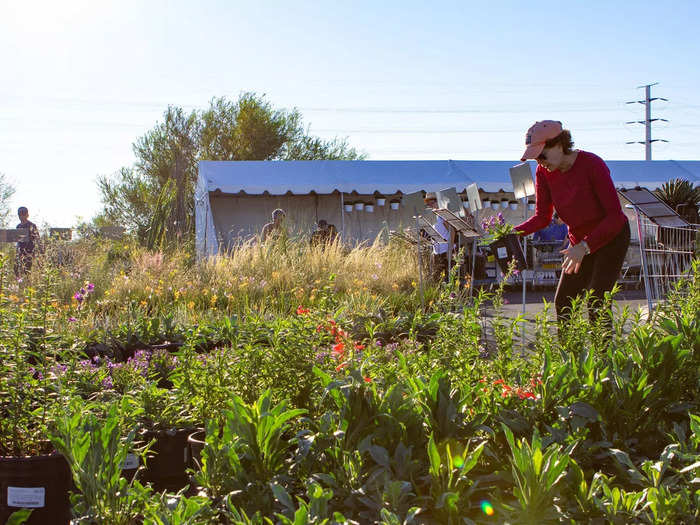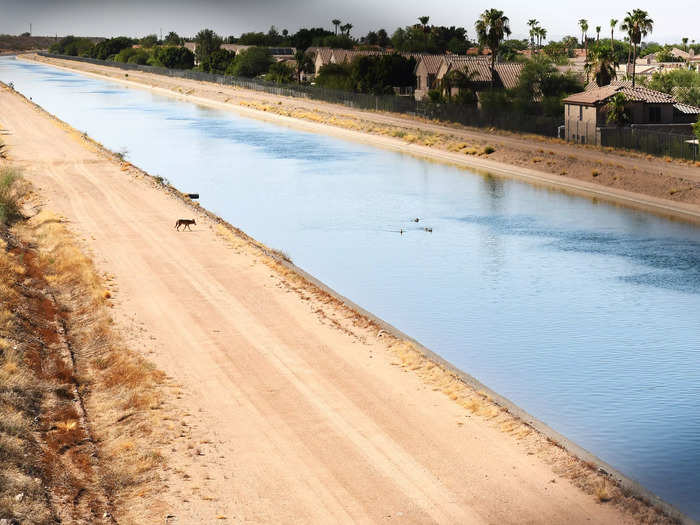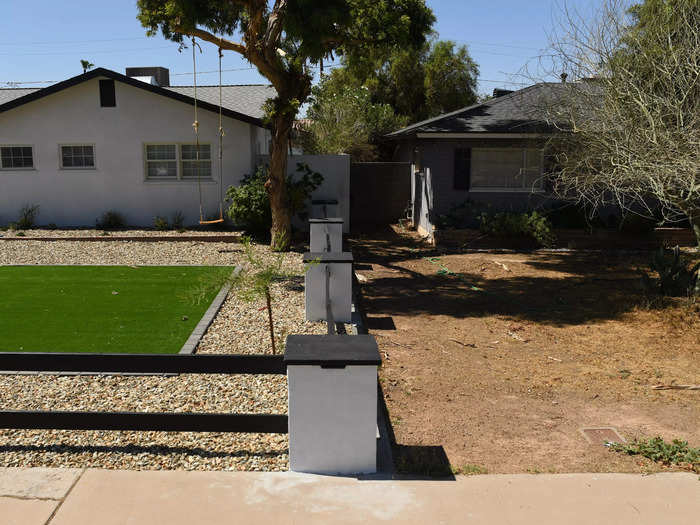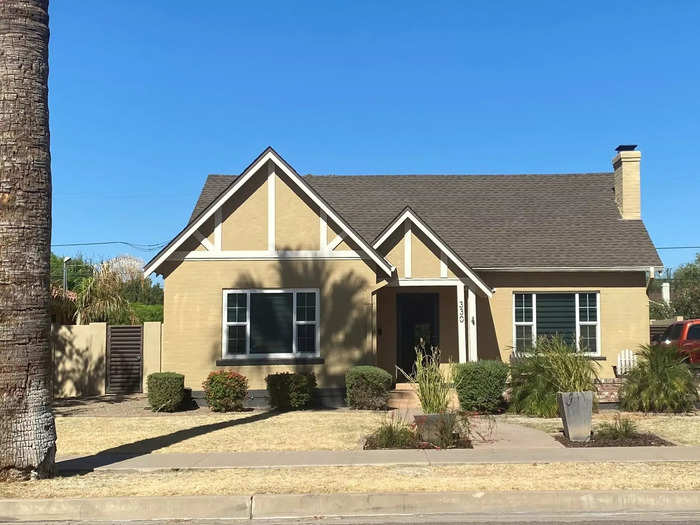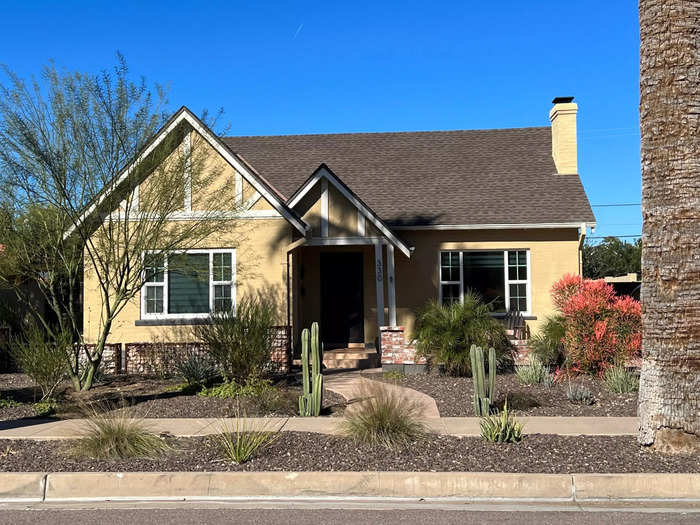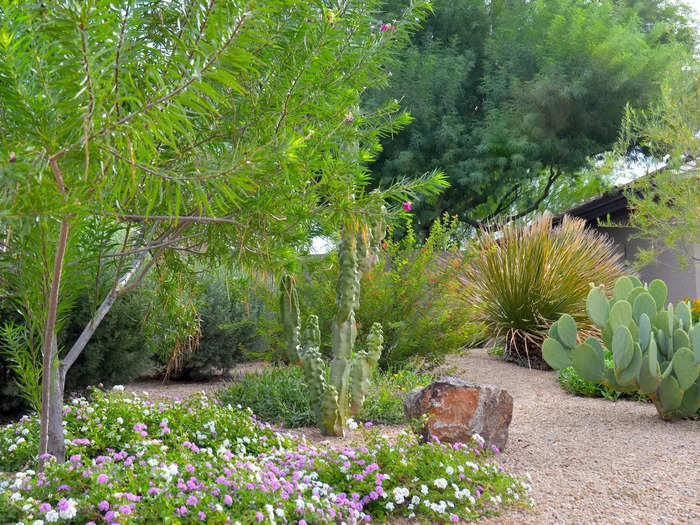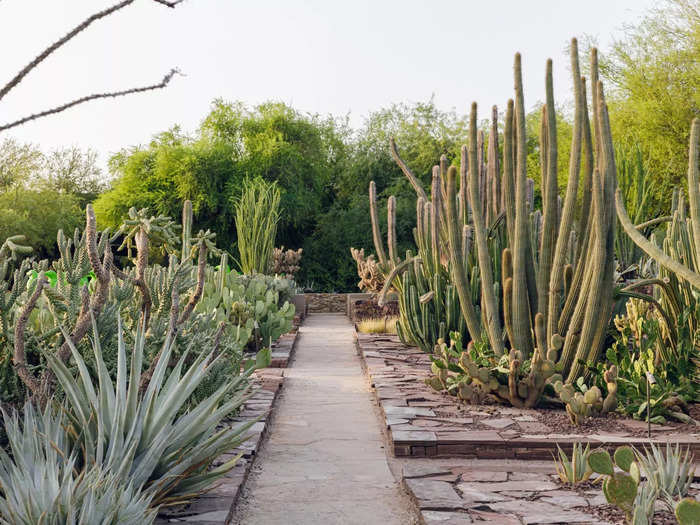Family explores the Desert Botanical Garden in Phoenix, ArizonaDesert Botanical Garden
- Homeowners in Phoenix are at the forefront of the anti-lawn movement in the Southwest.
- The anti-lawn movement encourages people to replace their greenery with sustainable alternatives.
- The city is helping residents transform their lawns into sustainable, attractive, low-maintenance ecosystems.
Few homes in Phoenix and its surrounding communities have the thick grass and carefully manicured shrubs and trees of lawns found in other parts of the US.
Desert residents are uniquely poised to recognize the environmental harms associated with conventional lawns and lean into more climate-friendly landscaping. Within the past decade, Phoenicians have become a catalyst for the growing anti-lawn movement.
What is the anti-lawn movement?
Phoenicians shop for desert plants at the Desert Botanical Garden’s annual spring plant sale. Desert Botanical Garden
The anti-lawn movement encourages people to replace the greenery in their private lawns with more sustainable alternatives. Grass lawns use up more water than any other ground cover, and the herbicides and gas-powered lawn mowers used to care for them pump wildlife-killing substances and carbon into the surrounding ecosystem. Grass also lacks the pollinator benefits of flowering ground covers. The anti-lawn movement favors using native vegetation and landscaping rock to create a yard that's both visually appealing and beneficial to the environment.
Why Phoenix?
A coyote heads to a canal to take a drink on July 6, 2022 in Phoenix, Arizona. The canal is full of Colorado River water and is part of the Central Arizona Project. The 336 mile project diverts water from the Colorado River to support over 5 million people in Arizona. RJ Sangosti/Getty Images
Phoenix tends to get less than 10 inches of rain a year, making it one of the driest US cities. The 336 miles of canals that make up the Central Arizona Project are responsible for carrying Colorado River water and rainwater to neighborhoods throughout the state, including those in Phoenix. But because of unprecedented drought, the canals are drier than ever before, leaving residents to adapt to water shortages.
Phoenician homeowners take a variety of approaches to desert-friendly 'lawns'
A homeowner has installed artificial turf in their front yard as their neighbor to the right is left with mostly dirt during the hot summer on July 6, 2022 in Phoenix, Arizona. RJ Sangosti/Getty Images
In Phoenix, grass lawns have long been considered an economic indulgence, but in the past few years they've exacerbated Arizona's water crisis. For many Phoenicians, finding a solution has become a priority.
The anti-lawn movement in practice
The Joneses' yard before they learned about the anti-lawn movement. Jennifer Jones
In February 2021, Jennifer and Brian Jones, who live in Phoenix's historic Willo District, decided to forgo their lawn in favor of a desert landscape.
"We were tired of watering grass that didn't look good, despite our efforts to dethatch and reseed it yearly," Jennifer Jones said. "We were paying a landscaper to mow, and with the high cost of water, enough was enough." She added that their neighbor had a yard with a beautiful desert landscape that inspired her and her husband to revamp theirs.
From dry grass to ideal desert ecosystem
The Joneses' yard after they embraced the anti-lawn movement. Jennifer Jones
She started by hiring someone to remove the grass from their yard. Then she and her husband put down a weed barrier and worked with a friend to draw up a design. A local nursery helped them choose drought-friendly plants, and after placing those, they finished the yard with landscaping rock. Now they have a serene yard with low-maintenance greenery like palo verde, palms, cacti, and firesticks.
The city is embracing desert landscaping
Noelle Johnson
Noelle Johnson, a horticulturist and landscape consultant in Phoenix, says more Arizonans are turning to desert landscaping as they try to maintain curb appeal and navigate the state's dwindling water supply. Johnson typically works with her clients to replace decorative lawns with attractive ground covers that use far less water, like trailing lantana and dwarf natal plum, as well as ensure clients properly water their grasses and other plants.
"While a well-manicured lawn is attractive, it's high-maintenance and thirsty, requiring a lot of water to keep healthy," Johnson said. "We need to embrace a mind shift, realizing that we live in a hot, arid climate where water is a precious resource."
She added that the lawn is "really the first place to start saving water."
City programs and local wildlife groups showcase what's possible
The Desert Botanical Garden and other city programs showcase the diversity of plants that could thrive on a typical Arizona lawn. Desert Botanical Garden
Phoenix has many resources for homeowners looking to lower their water bills and give the local ecosystem a boost. The Desert Botanical Garden, a majestic local showcase of desert flora, regularly conducts desert landscaping courses that homeowners can complete at their own pace. The city of Phoenix sporadically offers similar classes. Homeowners can even certify their yards with the Arizona Wildlife Federation, which recognizes private landscapes that are beneficial to local wildlife.

